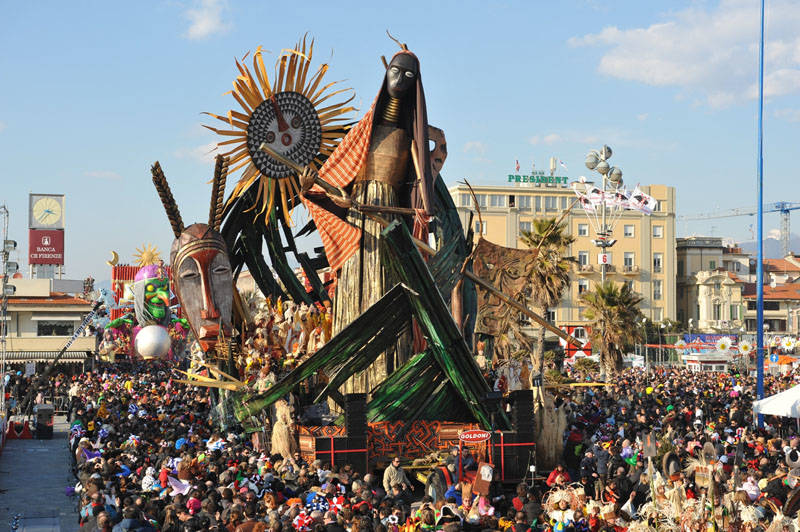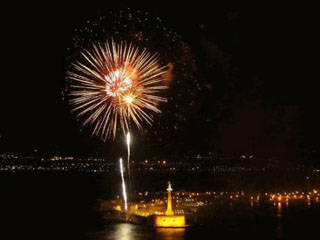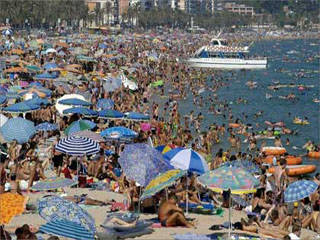"Ferragosto": Partying Without Losing Your Religion
All around the world, August 15th is a day like any other: probably the sun will shine harder on the helmet of a construction worker who works on a new building, the AC will work non stop in the office of a sales rep, and your typical housewife will postpone to tomorrow some of her chores as the heat is too much to handle... but that construction worker, that sales rep and even that housewife will not take a break from their daily routine.
In Italy things are different... in Italy August 15th (known as Ferragosto) is a party day: the sun shines on the empty helmet of a construction worker, the AC is turned off in each and every office in each and every city, and the housewife stores away brooms and rolling pin in favor of a nice bathing suit... everybody is out to party... or at least rest! Despite all the old stereotypes that describe Italians as lazy and even lazier than lazy, there is a reason for this, and the reason has ancient roots. It is known that in Ancient Rome the month of August was dotted with religious festivities. In the 18th century BC, emperor Ottaviano Augusto decided that the fifteenth day of August was the day of “feriae Augusti” (August's day of rest) that celebrated the end of the summer work in the fields.
The festivities, as customary for the Romans, included games, horse races, but mostly workers celebrated with their bosses who would give them a nice tip in return of their hard work. This was the beginning of a tradition, the tradition of celebrating Ferragosto. Obviously, there are no more games or horse races (except for the city of Siena where, every year, the day after Ferragosto, the Palio takes place), but single towns, especially the ones who count on tourism, organize festivals, beach parties and just fun stuff!
The beach usually is the favored destination for this cheerful holiday, as after a game of beach volley one can freshen up by swimming in the blue sea. But in the last decade people enjoy going to the mountains or the country as well, where they can enjoy a cooler climate and a more peaceful environment. It used to be that cities were deserted. Now things have changed a bit especially in artistic cities that have finally understood to keep museums and other cultural spots open for those tourists, and locals alike, who want to do something different, more uplifting or that simply do not own a water gun. (This year the Ministry of Fine Arts has announced that 325 museums and artistic destinations will indeed be open).
Needless to say that as in any commedia all'italiana (Italian-style comedy), the consequences of this massive exodus to unique destinations is predictable: the beaches are overcrowded with crying babies, crabby grandparents and youngsters playing with water balloons, the fields are filled with large groups of people where there is always someone who plays the guitar, someone else who sings and a bottle of wine to be passed around, museums are inaccessible and monuments are hidden by the crowd, highways are packed with steaming cars (going either to the beach, the countryside or the mountains... and often spending great part of the day without moving) whose drivers are tired and hot as they protest and promise themselves things will be different the following year. This is a humorous picture, a fun portrait that is repainted every summer the same exact way, despite the aforementioned promises of doing things differently (or rather, staying at home) the year to come. Things never change, and this year Telefono Blu (a company whose goal is the protection of the consumer) foresees that 36.000 Italians will leave the city during the Ferragosto weekend. August 15th is not only a popular holiday as it falls on the same day of an important religious festivity. Pope Pius XII (Eugenio Pacelli), in 1950, decided to commemorate the death of Mary and her bodily assumption into Heaven.
Exercising papal infallibity, Pope Pius declared in “Munificentissimus Deus” that it is a dogma of the Church "that the Immaculate Mother of God, the ever Virgin Mary, having completed the course of her earthly life, was assumed body and soul into heavenly glory." As a dogma, the Assumption is a required belief of all Catholics; anyone who publicly dissents from the dogma, Pope Pius declared, "has fallen away completely from the divine and Catholic Faith." In Italy most religious holidays are celebrated with the holy mass, but also with processions along the streets or on the beach... often, for Ferragosto, the statue of the Virgin Mary is placed on a boat that is filled with flowers, and it is followed by more boats where the faithfuls sit and pray... some other towns prefer to do a theatrical representation of the ascension while others simply showcase the statue of the Virgin Mary in the town's square so people can go pray. Along with all these religious celebrations there are open air markets, street fairs, concerts and fireworks: once again the sacred and the pagan meet halfway... something simply popular makes the celebrations less mystic while something religious makes the party more meaningful, more heartfelt.
This year, Turin will host a music concert held at the Basilica of Superga, that will also be featured on television (on RAI1). Viareggio, great beach destination, will celebrate in a carnival-style... people will have to wear costumes on Saturday night for a street party while on Sunday the promenade will welcome colorful floats. In Rome, at Parco San Sebastiano, there will be a concert and the surrounding towns (Marino, Canterano, Riofreddo) will have food and folk festivals. Naples and Florence will open their doors to culture: in Naples, on Sunday morning at 9.30 am, at the Real Cappella del Tesoro, a tour will lead visitors to the artistic and architectonic beauties of the city, while in Florence some of the most popular destinations Galleria degli Uffizi (8:15 – 18:50) and Galleria dell’Accademia (8:15 – 13:50) will be open to all. These are just a few examples, the activities are many and all are welcome. Today, just like in the old roman times, Italy is “feriae Augusti,” a religious event that cannot let go of its pagan roots.





































i-Italy
Facebook
Google+
This work may not be reproduced, in whole or in part, without prior written permission.
Questo lavoro non può essere riprodotto, in tutto o in parte, senza permesso scritto.